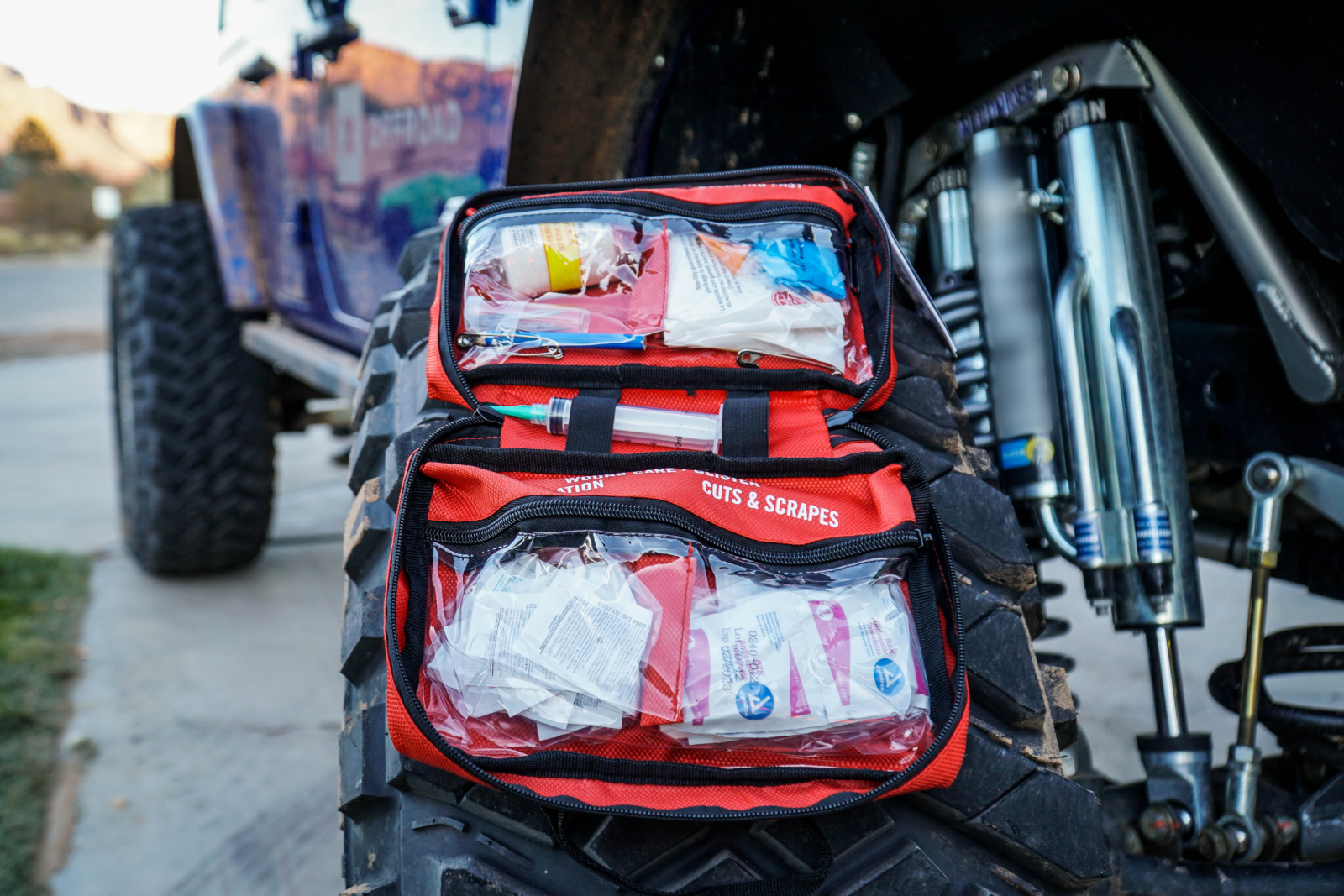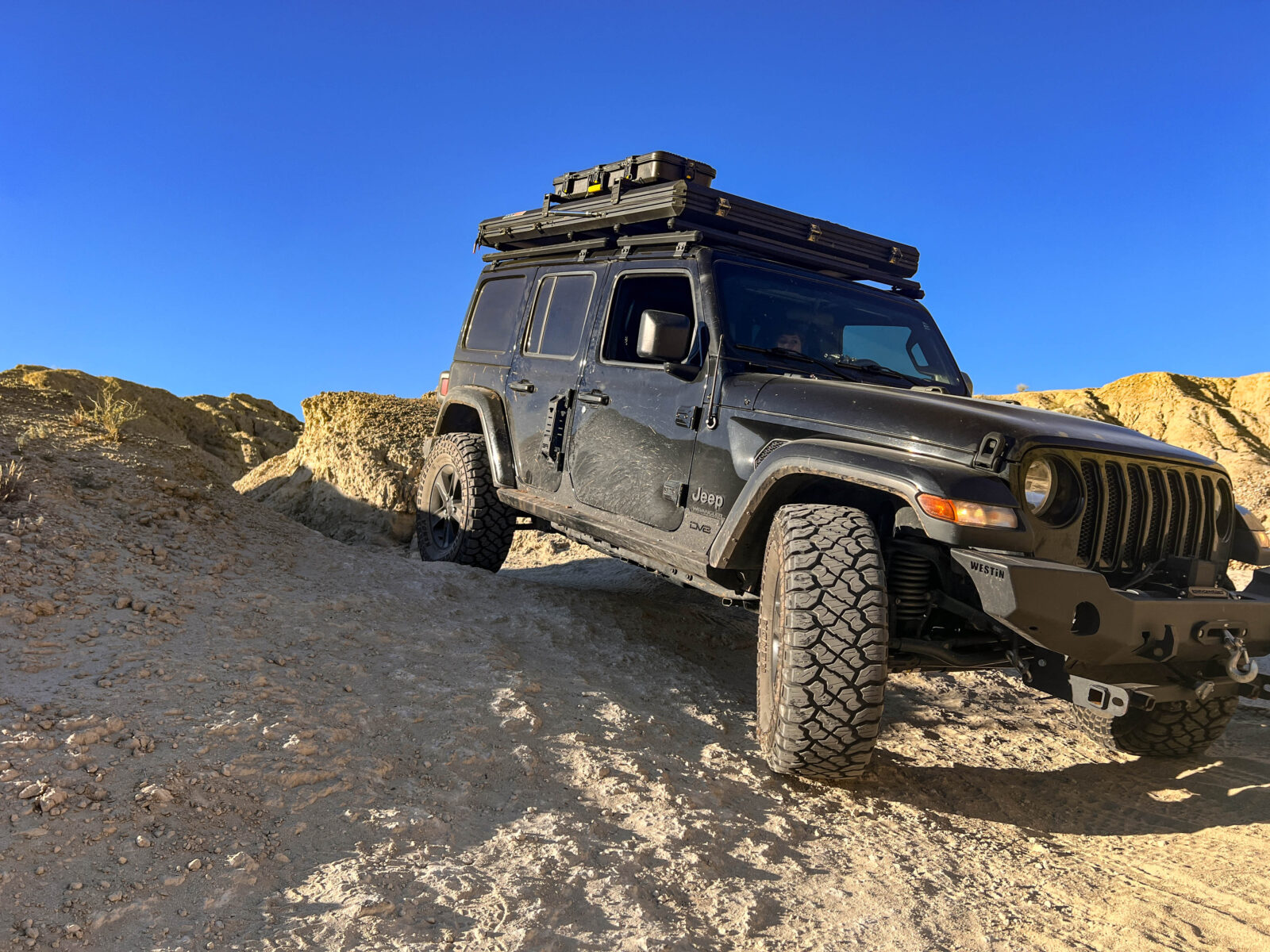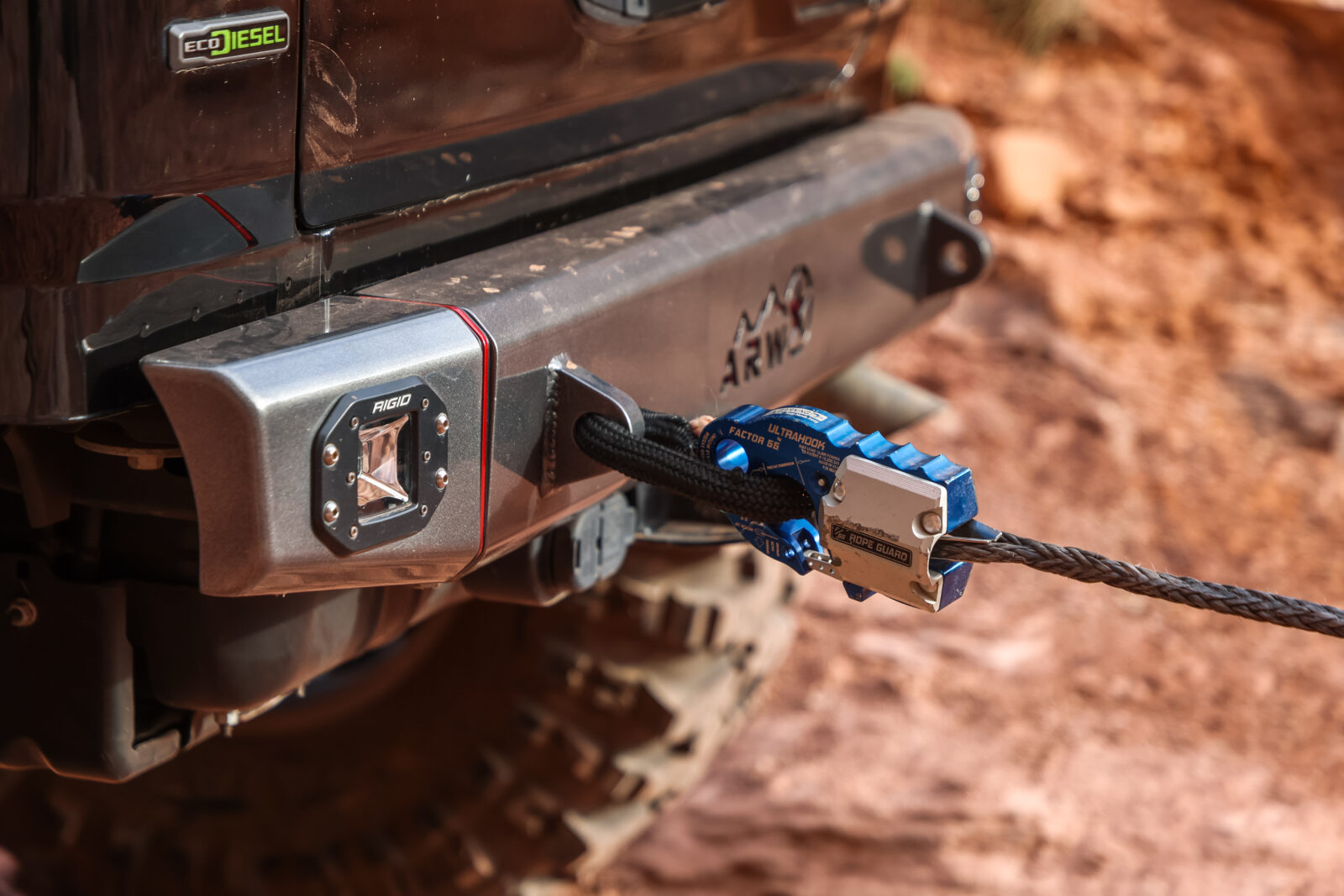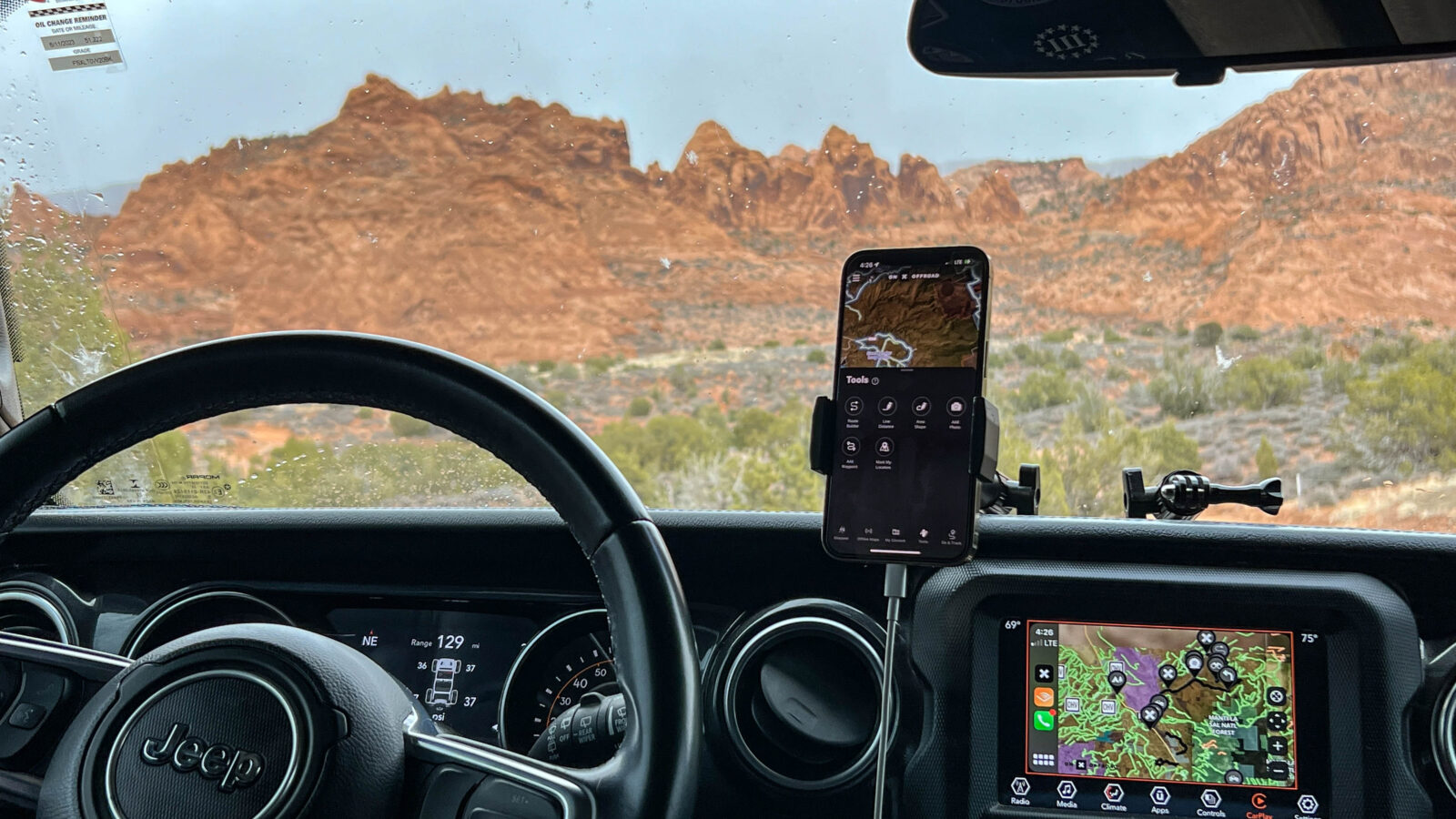Emergency Off-Road Recovery: What to Do When You’re Stuck
You’ll inevitably find yourself stuck and in a sticky situation when off-roading. With such a variety of challenging terrain and obstacles, it’s bound to happen eventually. That’s why, when heading into the backcountry, advance preparation is vital to whether an off-road outing end up enjoyable or agonizing.
Vehicles can become stuck in mud, sand, snow, and other terrain, which is why recovering a stuck vehicle is something everyone should practice and prepare for in advance. It’s also imperative to have the proper off-road recovery gear in your vehicle for when these situations arise.
Lacking the appropriate tools to deal with these challenges can leave you stuck for hours or even days—especially when in isolated areas with no cell service. Having the right off-road recovery gear is critical for safety and self-sufficiency.
In addition to having the proper recovery gear, knowing how to use it is essential. Being prepared in advance also means you can help others who might be in trouble, adding to an already strong sense of community and camaraderie among off-road enthusiasts.
Equip yourself with the ultimate off-road companion
Plan, navigate, and tackle any trail with confidence. Access detailed trail maps, create custom waypoints, and use offline maps when you’re out of cell range to ensure a safe and successful adventure with onX Offroad.
The following guide was created to help you plan and prepare for their own off-road vehicle recovery. We’ll provide a “before you go” checklist, a suggested list of gear essentials, review methods for extracting a stuck vehicle, and briefly discuss off-road trail terrain types and how they affect the recovery process.
Before-You-Go Checklist

By creating an off-road pre-trip checklist, you’ll have peace of mind knowing you’ve prepared for any potential challenges that may arise. The following checklist is a starting point that you can continue to add to and refine with each successive trip.
Vehicle Mechanics Preparation
- Fuel Level – Be sure your vehicle has a full tank before starting the journey.
- Fluid Levels – Check engine oil, engine coolant, and brake and transmission fluids.
- 4WD/AWD System – Test drive system to ensure it is functioning properly.
- Tires – Check tire pressure (including spare) and tire wear conditions.
- Recovery Points – Check that front and rear recovery points are secure and accessible.
- Battery – Be sure the battery is in good condition and the terminals are clean.
- Lights – Check all vehicle lights: headlights, brake lights, turn signals, and off-road lights.
Recovery Gear to Carry
- Tow/Recovery Straps – At least one high-quality tow/recovery strap.
- D-Shackles – Be sure to carry a few D-shackles for connecting recovery straps.
- Winch – Be sure it is in working order by inspecting before each trip.
- Snatch Block – Increases the strength of your line while reducing load strain.
- Traction Boards – Used for extra traction in sand, mud, or snow.
- Shovel – For digging out when stuck.
- Gloves – Heavy-duty gloves for the recovery process.
Tools and Spare Parts
- Basic Tool Kit – With a variety of wrenches, sockets, screwdrivers, pliers, etc.
- Tire Repair Kit – With patches, plugs, and a compressor, air pump, or other inflation device.
- Jack – Carry a high-lift or bottle jack, whichever one best suits your vehicle type.
- Spare Parts – Such as drive belt(s), hoses, fuses, and other critical vehicle-specific spares.
- Duct Tape and Cable Ties – Ideal for quick/temporary repairs.
Safety and Navigation
- First Aid Kit – In case of emergencies.
- Fire Extinguisher – That’s fully charged and easily accessible.
- GPS Device – Carry a GPS device or install an app like onX Offroad with Offline Maps.
- Physical Maps – Also carry physical maps as a backup in case of device failure.
- Communication Device(s) – Two-way radios, satellite, or reliable cell phone with a charger.
- Identification – Be sure to have your personal ID, vehicle registration, and insurance papers.
Personal Gear
- Clothing – Weather-appropriate, including base layers, hats, sunglasses, and sturdy shoes.
- Food and Water – Enough for all participants for the estimated time of the trip, plus extra.
- Camping Gear – Bring items like a tent and sleeping bag in case you need to stay overnight.
- Blanket(s) – For added warmth in case of an emergency.
- Sunscreen and Insect Repellent – For added defense from sun and insects.
- Trash Bags – If you pack it in, be sure to pack it out—and leave no trace.
Final Checks Before You Go
- Weather Forecast – Check the weather forecast before you go and adjust gear accordingly.
- Trail Conditions – Verify any trails you plan to explore are open, noting trail difficulty ratings.
- Tell Others About Your Plans – Inform friends and family of your plans and expected return.
Off-Road Recovery Gear Essentials

Recovery Kit – A pre-assembled kit that includes a recovery strap, snatch block, shackles, tree trunk protector, and gloves. Look for a quality kit like those from ARB, Warn, Hi-Lift, or any other off-road–specific brand that’s built for reliability and easier extraction.
Earth/Land Anchor – Carrying one of these allows you to winch a stuck vehicle when there are no rocks or trees in the surrounding area by driving an anchor point into the ground.
Vehicle Recovery Boards – These UV-protected nylon traction mats provide a grippy surface to help extract a stuck vehicle and keep wheels from spinning excessively. They can also double as a tire-changing jack pad.
Compact/Foldable Shovel – Aids with the recovery process when an extraction is necessary.
Gloves – A quality set of work gloves to protect hands is helpful during the recovery process.
In addition to the items listed above, we also recommend you carry emergency, rescue, and repair essentials when heading into the backcountry. We’ve already compiled a list of suggested items in a separate blog that can be found here: Off-Roading Essential Gear.
Steps to Recover a Stuck Vehicle

Recovering a stuck vehicle when off-roading involves several different methods of extraction. The following are suggested steps and approaches to vehicle recovery.
1. Assess the Situation – Make safety a priority by ensuring everyone involved is safe and the area is secure from surrounding hazards. Identify the problem by determining what is causing the vehicle to be stuck—such as mud, sand, snow, or a type of obstacle.
2. Prepare for Recovery – Clear any debris around the tires and undercarriage, assemble your recovery gear, and when stuck in soft surfaces like sand and mud, lower the tire pressure for increased traction.
3. Recovery Kit/Vehicle Recovery Boards (Solo extraction) – Securely wedge vehicle recovery boards under the tires for maximum grip. Before attempting to extract the vehicle, use a shovel to dig out excess material around the tires and create an unobstructed path with no rocks or other debris. When ready, lightly apply throttle and avoid spinning the wheels excessively, which can eject the boards. Maintain steady, controlled acceleration while steering in the direction you wish to go.
4. Winch or Earth/Land Anchor Recovery (Solo extraction) – Attach a winch cable to a secure anchor point, such as a tree (be sure to use a tree protector) or a rock. If no rocks or trees are present, use an earth/ground anchor. When ready, engage the winch slowly, keeping the line taut, and have someone outside the vehicle monitor the winching process. When possible, use a winch damper to reduce the risk of injury in case the winch cable happens to snap.
5. Pulling Vehicle/Snatch Strap Recovery (Buddy extraction) – Attach a vehicle snatch strap to the recovery points on both vehicles, ensuring the strap is not twisted. Position the recovery vehicle ahead and parallel to the stuck vehicle and clear the path of rocks and other debris. When ready, the recovery vehicle should begin pulling in a slow and steady manner, making sure the strap/line stays taut and avoiding sudden jerking motions, which can damage both vehicles.
6. Post Vehicle Recovery – Once you’ve recovered the vehicle, stop and perform an inspection, checking for damage or issues caused during the recovery process. If you lowered the tire pressure, be sure to re-inflate to the appropriate PSI before proceeding.
To help prevent future incidents, consider the following suggestions before each adventure:
- Practice Using Recovery Gear – This ensures you’re prepared for any situation.
- Properly Inflate Tires – Tire pressure plays a significant role in avoiding sticky situations. Be sure to check tire pressure before every outing.
- Get to Know Terrain Types – Learning how to read terrain may take time to master, but it’s an invaluable skill for navigating rugged terrain that can help one avoid getting stuck.
- Plan and Know Your Route – Avoid surprises by knowing where you’re going in advance. Note any challenging sections or obstacles you’ll experience on the route.
- Conduct Regular Maintenance – Routine vehicle maintenance and a complete vehicle inspection before each trip significantly decrease the chances of getting stuck by ensuring your vehicle is performing at its tip-top best.
Off-Road Trail Terrain Types and How They Affect the Recovery Process

The type of trail and setting you intend to explore off-road can significantly impact the difficulty of recovering a stuck vehicle. For example, hardpack terrain is much less likely to cause a vehicle to become stuck than softer terrains such as sand and mud. These varying terrain types often call for differing methods of extraction.
For example, high-elevation terrain with few trees would suggest you should carry an earth/land anchor to winch out the vehicle when there are no trees accessible. Likewise, if you’re heading to an area with deep sand, it would be wise to carry vehicle recovery boards.
The lesson here is to consider the terrain type and conditions you intend to tackle and be sure to carry the appropriate recovery gear for each setting. Terrain conditions you may experience while in the backcountry include:
Mountain Trails
These types of trails are comprised of graded dirt roads, fire roads, service trails, and other two-track trails with surfaces made up of hardpack dirt, rock gardens, and scree/talus fields. Many are located in high elevations above the tree line, so consider carrying a land/earth anchor for these types of trail environments.
Sandy Trails
Typically located in areas with dunes and washes/arroyos, sand is a soft, power-robbing surface that’s much more susceptible to burying a vehicle than hard surfaces. Be aware that sandy areas may be located in settings with few recovery anchor points—such as trees and boulders—and plan accordingly.
Mud Trails
Like sandy trails, mud is another surface that saps power and can cause a vehicle to become stuck more easily. Tire type and air pressure are both critical aspects when navigating muddy conditions to avoid getting stuck.
Snow Trails
Like mud and sand, snowy trails increase the chances of becoming stuck, adding the challenges posed by snow and ice to the vehicle recovery process. Emphasis should be placed on having the proper personal gear—such as a jacket, gloves, and footwear—that helps you stay warm during a potentially extended recovery process.
Rock Crawling
A unique and growing segment of off-roading that tackles extreme terrain by climbing, crawling, and winching a vehicle over rugged and steep surfaces. This type of terrain can require a combination of the available methods for vehicle extraction, which means being prepared for nearly any kind of conditions.
Using onX Offroad for Recovery Planning

Installing the onX Offroad App on a smartphone or tablet is a helpful way to plan not only for your off-road trips but can also be an asset while on the trip. From planning to navigation, the onX Offroad App is a tool in your arsenal when off-roading. Ways onX Offroad can help streamline an off-road experience include:
- Route Builder – Plan and organize a trip in advance that can then be migrated over to a smartphone or tablet for easy access to designated routes.
- Trail Reports – Gives you recent reports from other users about trail conditions.
- Trail Maps – Access trail length, allowed vehicle types, difficulty rating, and whether the trail is open or closed ahead of time or on the fly.
- Custom Waypoints – Mark places and obstacles along a trail for future reference.
- Offline Maps – Ideal when adventures go beyond cell coverage.
- Apple CarPlay – Experience onX Offroad on their vehicle’s dash screen.
At onX Offroad, we encourage off-road enthusiasts to practice responsible trail stewardship in order to ensure the longevity of off-roading for generations to come. To learn more about onX Offroad’s commitment to trail stewardship, visit our Stewardship page.
Feel confident in your off-roading adventures with onx offroad
With offline maps, customizable waypoints, shareable folders, and trail maps that provide trail difficulty, you can feel confident in your next adventure. Get the app today.